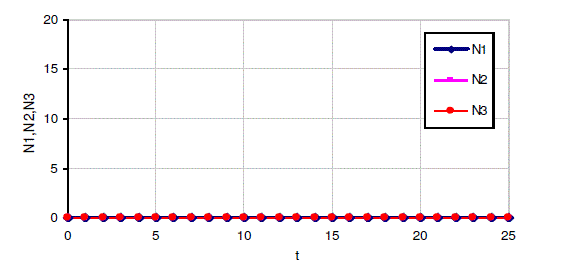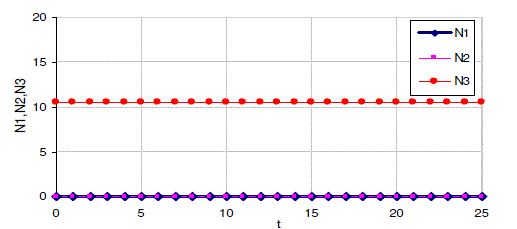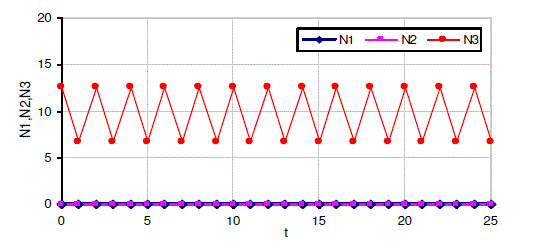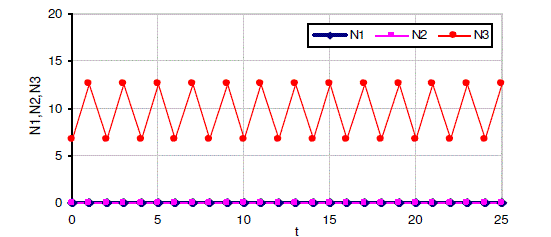ISSN ONLINE(2320-9801) PRINT (2320-9798)
ISSN ONLINE(2320-9801) PRINT (2320-9798)
Poral Nagaraj1, Kruthika S2
|
| Related article at Pubmed, Scholar Google |
Visit for more related articles at International Journal of Innovative Research in Computer and Communication Engineering
Generally huge number of preventable medication errors occurs annually, causing enormous number of deaths. Medication errors do increase as the number of medications being administered increases . Therefore, people with mult imorbidity who take several medications at once are more vulnerable to medication errors. The main objective of this paper is to present a novel solution using android based mobile device integrated with RFID reader and application to reduce medical errors due to drug interaction. The scope of the proposed framework focuses on detecting a drug allergy or drug interaction, alerting the physician, providing adequate information about the case detected, enhancing the commun ication among the treatment staff (mu ltip le physicians), updating the patient’s health record in case of an unknown allergy or non-recorded allergy detected by another physician. In this system, an RFID module is integrated with Hospital Information Systems (HIS) with the help of Android based mobile devices and Bluetooth interfaces. It facilitates cross verification processes and reduces medical, medicat ion and diagnosis errors.
Keywords |
| Framework, medication error, mult imorbidity, Rfid, Rfid tag, Rfid reader. |
I. INTRODUCTION |
| In the medical field, medication errors lead to significant clinical and financial consequences [2]. In Canada alone, medication errors are the third leading cause of death after cancer and heart disease [1, 3]. Moreover, medication errors increase as the number of medications being administered increases [1]. Multi -morbidity patients who has more than one chronic disease (like cancer, heart diseases, chronic respiratory diseases, diabetes, mental illness, and musculoskeletal diseases) are more likely to take s everal medicat ions at once [6, 7]. The occurrence of medication errors such as adverse drug events in patients with multimorbidity can have impacts that seriously affect patients’ quality of life [5, 8]. Medication errors can be reduced depending on the detection method used [5]. |
| In case of an error, the nurse usually tries to communicate with the case physician or pharmacist by making a call and/or writing a report to get instructions and critical information that will help to rectify the action. However, nurses find that this way of communication is not effective, time-consuming, and keeps them away from attending to their patients. Furthermore, phone calls cannot completely convey critical observations and a report may not be read. Therefore, nurses, physicians, and pharmacists need to get a better understanding of the case to be able to share the right information with each other [9]. A more effect ive form of communication would help them to avoid medication errors and increase patient safety [4]. |
| The need to enhance patient safety and control medication errors has increased attention on radio frequency identification (RFID) technology. RFID is a wireless technology for communication [1] that uses radio frequency to transfer data from a tagged object. RFID has the capability to identify, track and monitor objects |
| The system has been implemented using Samsung Galaxy Core Prime Smartphone with Android 4.4.4 platform, MIFARE Classic 1K tags, and a database populated with 1 patients’ record and 4 medications. This system informs t he physicians about the new drugs that are being administered to the patient and the physicians can guide the patient in order to avoid any medical interference. |
| The rest of the paper is organized as follows. Section II presents a brief summary of related works already existing in literature and highlights the distinguished approach of our solution as compared to them. Section III describes the proposed framework. Sect ion IV presents results and discussions. Finally, Section V presents the conclusion and future work |
II. RELATED WORK |
| RFID has a powerful ability to track items. In a study by Halamka [10], RFID was used to track medical objects such as IV pumps, medical equip ment, tools, devices, and even employees and patients. The purpose of Halamka ’s study was to determine whether RFID technology could substitute barcode tracking, with RFID showing considerable superiority. Another study by Wang et al [11] used RFID to track SARS (Severe Acute Respiratory Syndrome) - infected patients, with the objective of spott ing new infections and to increase patient safety. |
| Additionally, due to RFID’s high monitoring functionality, a study by Dalton and Rossini [12] used RFID technology for blood transfusion monitoring. In this application, the caregiver would read both the patient’s tag and the blood tag; if both tags would match, then the blood transfusion can be safely conducted. The purpose of the study was to test the efficiency of RFID to supervise blood donations and transfusions . |
| Moreover, Bardram [13] developed a context-aware RFID system, where the patients and the caregiver wear tags while the system monitors their activities. This system was intended to develop hospital infrastructure and applications. Similarly, Laboratories [14] developed a hygiene monitoring system, where a 9 RFID reader was placed on a hygiene dispenser and RFID tags were placed on the badges of caregivers. The dispenser gathered informat ion regarding its users and then prepared a report. This system’s objective was to ensure proper hand hygiene for patient and employee safety. |
III. PROPOSED FRAMEWORK |
| Figure 1 shows the Framework for the Proposed RFID Applicat ion. The Reading Tags phase is the starting point in this framework. The drug that is being administered to the patient is swiped against the RFID tag reader. The RFID application has the ability to do the following: read tag IDs and send them to the hospital serv er (database); receive the response from the hospital server (auto mode) or doctor (manual mode); and display the response to the patient |
 |
| The hospital server works as a link between the RFID application and the hospital database. The hospital database includes patient information such as active medication(s), names of treatment team members. It also includes drug information such as the drug’s name and usage and drug interactions information. In this way, the hospital database works as a trusted source for providing the required data. |
| The workflow in this system is as follows: |
| 1. The patient swipes the patient’s RFID tag using the RFID reader. |
| 2. The RFID applicat ion stores the patient’s unique ID that is read fro m the patient’s tag |
| 3. The patient swipes the drug’s RFID tag by using the RFID reader. |
| 4. The RFID applicat ion stores the drug’s unique ID that is read fro m the drug’s tag. |
| 5. The drug informat ion is sent to the doctor’s android device and the doctor’s respons e is communicated back to the patient through the bluetooth module. |
| 6. The drug information is sent across to the hospital database through the server, along with the doctor’s directions for the particular drug |
IV. RESULTS AND DISCUSSION |
| The simulation study includes the following modules: |
| 1. RFID reader and tag |
| 2. Microcontroller and its interface with LCD |
| 3. Bluetooth |
| 4. Android application |
 |
| The experimental results are obtained by executing the code on Eclipse. The hardware components showed in figure 2 are initialized by displaying a request message on LCD to punch the card against RFID reader. After punching the card, the RFID reader reads the card and transmits card details through the multiplexer to the microcontroller. Microcontroller in turn conveys this informat ion to the bluetooth module. The bluetooth module then communicates this information to the respective doctor’s mobile phone. |
| Consequently, the doctor invokes his android app to log in as shown in figure 3. The credentials of the doctor are required for logging in, which ensures the security of patient information. |
 |
| The doctor responds to the patient’s message. The response is either automatic or manual. The automat ic response to patient’s query, without any involvement by doctor, is shown in figure 4. In the automatic response, when the patient punched the Rfid card against the reader, the reader will read the card and send the information to the doctor and the patient gets automatic response from the module. |
 |
| The manual reply, which requires doctor’s manual involvement, is shown in figure 5. The doctor’s reply is then received by the bluetooth module and conveyed to the microcontroller. Figure 6 shows the display of doctor’s response. The doctor’s reply is received by the bluetooth module and conveyed to the microcontroller. The microcontroller displays this information in the patient’s LCD screen. |
V. CONCLUSION AND FUTURE WORK |
| Drug allergies and drug interactions are serious problems for patients with mult iple health ailments. These interactions happen during the medicine administration phase. In this paper we presented a novel solution of using a smart phone and an RFID application to detect drug allergies and drug interactions for people with mult imorbidity when being administered medications. This application helps to improve patient safety by detecting drug allergies and drug interactions before they happen. It also helps to increase the quality of healthcare by promoting, enhancing and better enabling commun ication between the patient’s trea tment team members. Moreover, RFID provides a better way of informing the physician in case of drug allergies or drug interactions by saving the patient time and giving the right informat ion to the attending physician. |
| The RFID module can be integrated with a pre-programmed microcontroller along with a LCD screen and GSM communicat ion module, to form a dedicated error prevention device. This device can be optimized for space and portability, thus enabling the patient to always carry the device during drug administration process. This module can be extended to include a multi-patient multi-doctor architecture through which a single doctor can be able to attend to the queries of multiple patients simultaneously using patient ids. |
References |
|